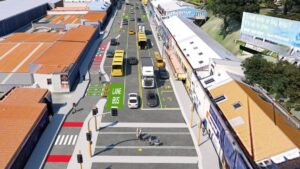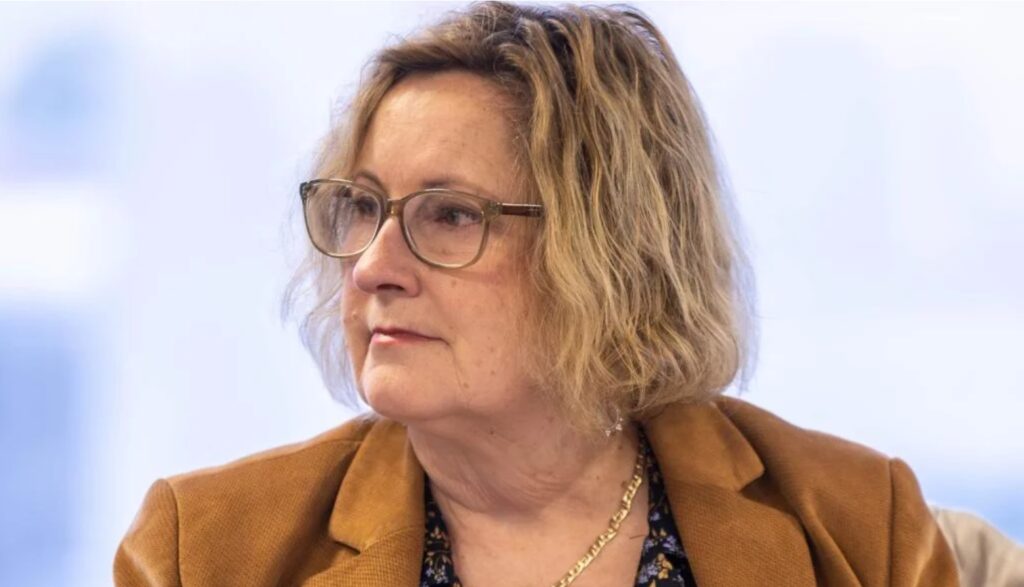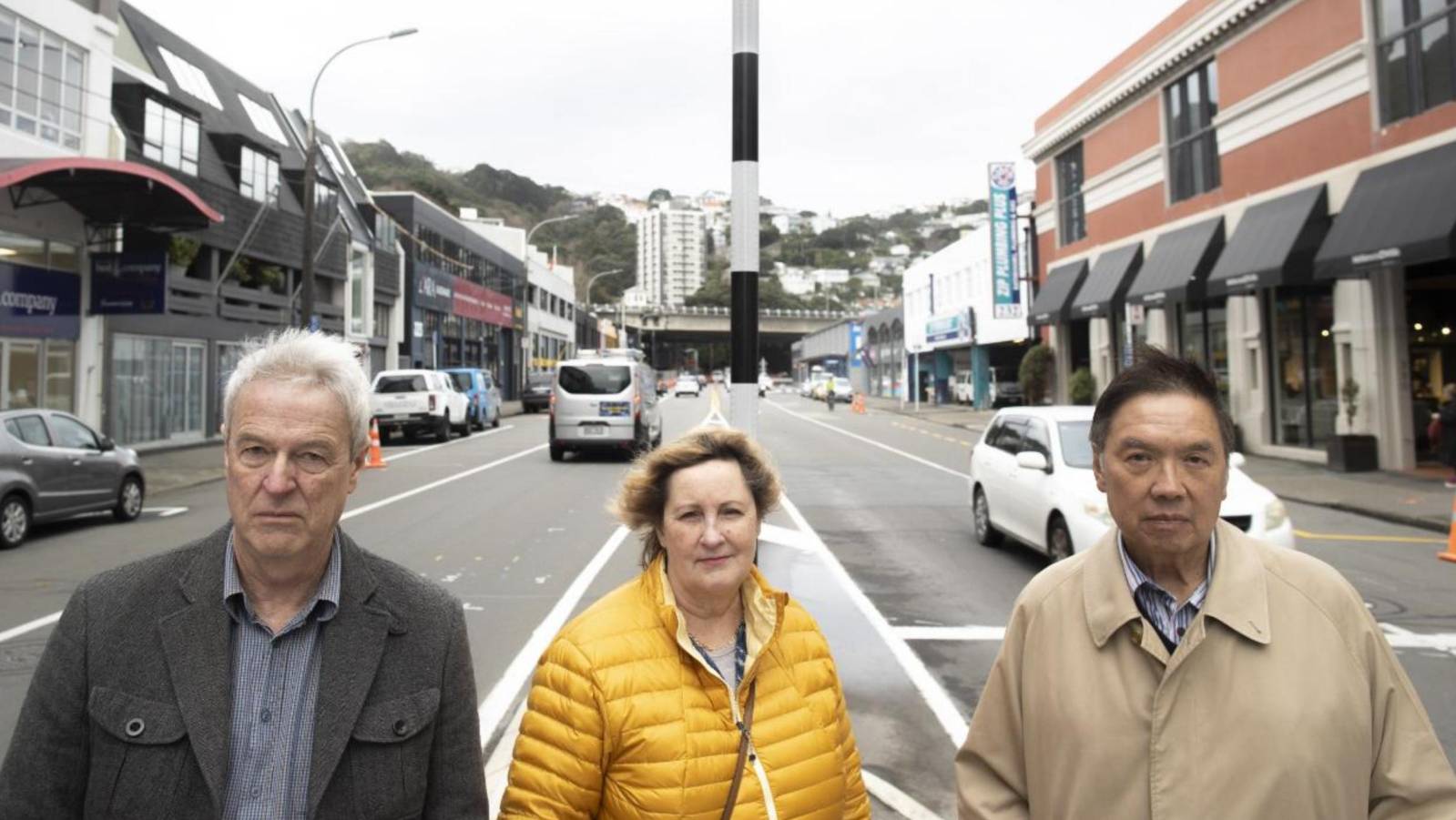Wellington’s The Post newspaper reports (2 August):
Thorndon Quay’s vexed raised pedestrian crossings have raised more bumps for Wellington City Council, which has been told NZTA would no longer fund 51% of their cost.
The council now faces three options, with the one preferred by council officials estimated to cost an additional $312,500.
While the others would save money, they would be less safe, a report to the regulatory processes committee says.
Options presented in the report were:
- Continue with current design (preferred): extra cost $312,500.
- Retain signalised crossings and remove all raised asphalt platforms: savings $625,000
- Remove the entire crossing at Gun City (signals, platform, road marking): savings $125,000
The preferred option met all NZ Transport Authority (NZTA)/Waka Kotahi road safety specifications and guidance requirements, the report said.

The traffic mess and possible permanent disruption to businesses along Thorndon Quay is turning into a major issue for the Wellington City Council
Going for the cheaper options meant the council would carry associated safety risks due to its departure from best safety practice.
Councillors appeared blindsided by NZTA, with Transport and Infrastructure Manager Brad Singh saying it had advised on Tuesday it wouldn’t help fund the crossings.
Singh told councillors on Thursday NZTA had been directed to not fund any raised safety platforms on any of its projects “or any local work projects from here on in”.
It relates to the Government Policy Statement released in June, which says: “the Government expects that investment … will not be made in traffic calming measures such as raised pedestrian crossings, raised platforms, speed bumps, and in-lane bus stops on state highways and local roads”.
Projects previously part of Let’s Get Wellington Moving, such as the Thorndon Quay and Hutt Road works, retain funding previously approved, NZTA told The Post.
But if (WCC) changed the scope or cost, it had to return to the Board for re-approval to ensure the project is still a value-for-money investment and aligned with the GPS.
Fire and Emergency has argued raised crossings hampered the ability of their fire trucks to swiftly reach crisis points.
“The scope of the Thorndon Quay and Hutt Road project has changed. We are working with WCC to understand the impacts of the changes proposed. This means the project’s future plans and funding need to be reassessed,” said Kesh Keshaboina, regional manager systems design.
NZTA funding decisions via the National Land Transport Programme (NLTP), must give effect to the GPS and align with its policy direction.
The next NLTP is due to be published in September.
Councillor Sarah Free questioned the NZTA move. “If we’ve got an agreed contract in relation to this project, is it possible for NZTA to actually not fund raised crossings, if they had been part of the design?” she said. “They would renege on that commitment to fund it?”
Singh said that was his understanding, though council was still discussing it. “It’s an ongoing conversation, but NZTA guidance … says that this is the right safety solution for the situation. But at the same time, at the funding level, they’ve also indicated that they won’t fund it.”
In the wake of hitting the unexpected NZTA funding pothole, the Regulatory Processes Committee chaired by Free would next week discuss the options for Thorndon Quay, a main arterial route that is a maze of road works.
Free told The Post it was possible the issue would be referred to a meeting of the full council.
“This has got to being a bit of a political hot potato,” she said. “In terms of being seen as a robust process, it’s probably better that the whole of the council be involved, rather than just the subset of us.
“I’m probably going to suggest that we don’t even make a decision, that we agree that we refer decision making to the council.”
Thorndon Quay has been a vexed issue. As a main road lined by businesses it has been difficult to balance traffic measures with other requirements.
On Thursday, Thorndon Quay businesses petitioned council seeking a pause in roadworks, saying they had caused “severe economic harm”.
Fire and Emergency has argued raised crossings hampered the ability of their fire trucks to swiftly reach crisis points.

Councillor Diane Calvert (Onslow / Western ward)
Councillor Diane Calvert hailed NZTA. “Council continues to want to fragment taking a cohesive response to the many issues thrown up by the poor Thorndon Quay design. At least NZTA is starting to see some sense,” she told The Post.
“Obviously the raised aspect of the pedestrian crossings need to go along with reducing the planned number.”
Thorndon Quay is one of the most important commuter routes in Wellington. Council figures show on weekdays, 10,000 people travel the route by bus, 1300 by bike, and 9000 in cars.
It is an important connection to the northern suburbs, and council plans were intended to make it safer and easier for more people to walk, bike, scoot, or use public transport.
Full article and photos: The Post




